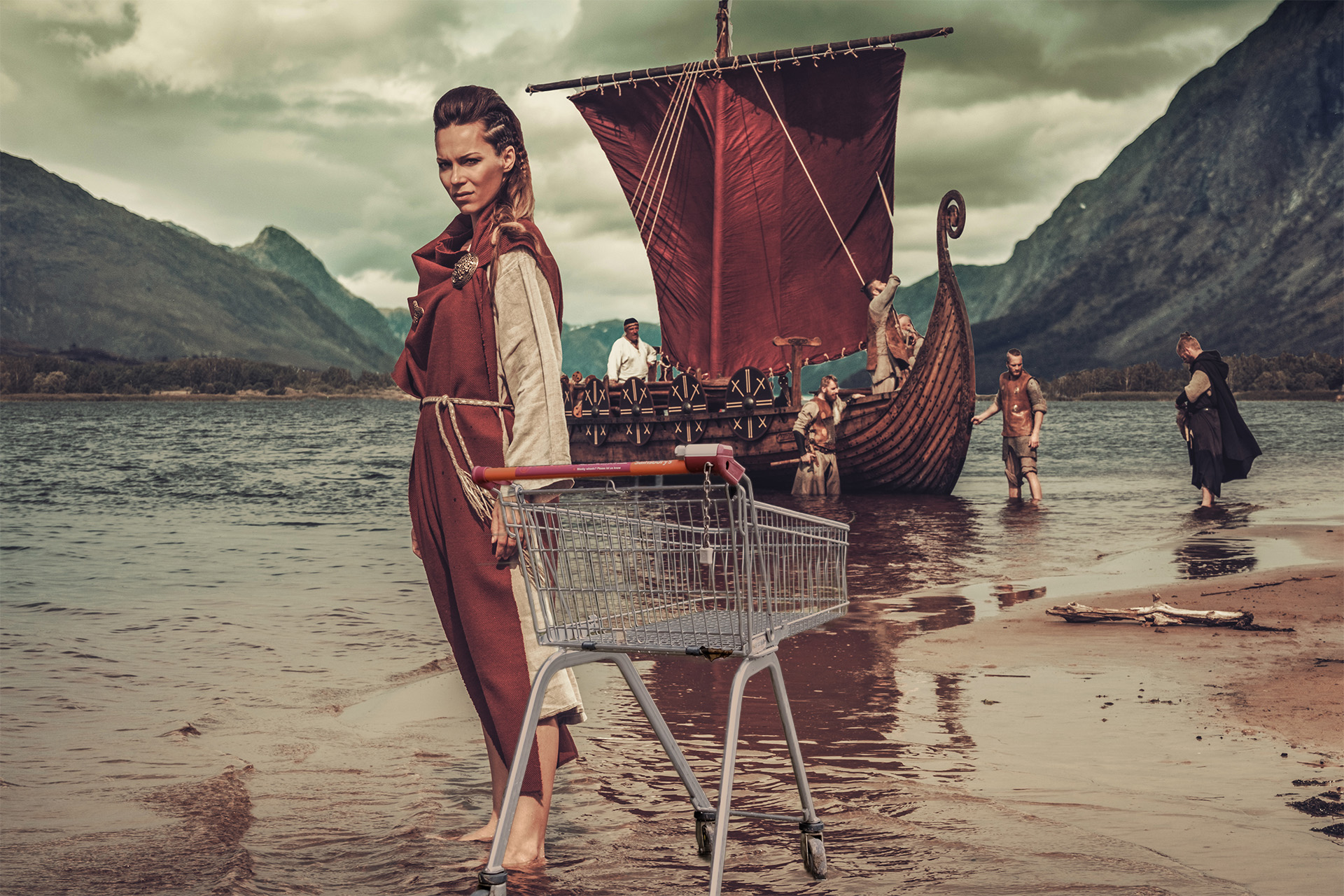Over the last few weeks, I have been researching the origins of the corporation as we know it today. I traced its roots back to 1600 and the East India Company, eventually arriving at institutions like the Royal African Company β a corporate entity devoted to the transatlantic slave trade.
As I deepened my exploration of slavery, I took a side step into Viking mythology and the commodification of the Viking brand β a brand whose symbols now appear on yoga mats as if they were gateways to spiritual enlightenment. To the Vikings, slavery was foundational to their economy, social hierarchy and expansionist model.
The Viking brand as experienced today is the polar opposite of the lives lived in history. By todayβs standards, Vikings would resemble criminal gangs or drug cartels: engaged in child abduction, sex trafficking, rape, slavery, and the merciless killing, maiming, and torture of the defenceless.
In reality a Viking raid would have resembled, to the victims, events like the Lashkar-e-Taiba attack on the Taj Mahal Palace Hotel in Mumbai in 2008, or the ISIS attack on Sousse beach in 2015 or the Hamas massacre of festivalgoers at the Nova Music Festival in the Negev Desert in 2023 β yet I doubt we would ever dream of celebrating those atrocities a thousand years from now with themed cruises and costume parties.
Why is this different?
What we “remember” of the Vikings now is reduced to a lifestyle brand, a heritage aesthetic through which to sell merchandise and experiences:
- Beard oil and beard competitions
- DNA tests that proudly reveal “Viking ancestry”
- Runes on yoga mats marketed as symbols of inner strength
- Netflix shows and video games with heroic Viking protagonists
- Tourism brochures offering “Viking experiences”
- Jewellery and tattoos featuring symbols once carved into slave collars or war gear
The violence itself is aestheticized: axes become icons. helmets become mascots. longships become logos. We have erased the victim and preserved the costume.
This historical transformation reflects a broader process of collective and commodified amnesia β a system where power is extracted from history, scrubbed clean, and sold back to us as identity.
The Viking is now a retail ready product:
- Branded masculinity
- Marketable ancestral myth
- A legacy for sale
Everything uncomfortable β rape, slavery, child exploitation, public executions β is either edited out or stylized into blood-spattered glory.
What This Means for Me
This raises a question for my practice: can we create work that re-centres the victim, resists branding, and interrupts the heritage industry?
Bibliography
Historical & Archaeological Sources
Brink, S., & Price, N. (Eds.). (2008). The Viking World. Routledge.
Jesch, J. (2015). The Viking Diaspora. Routledge.
Graham-Campbell, J. (2013). The Viking World. Frances Lincoln.
Winroth, A. (2014). The Age of the Vikings. Princeton University Press.
Williams, G. (2014). Viking: Life and Legend. British Museum Press.
Cultural Appropriation & Commercialisation
Olsen, B. (2010). In Defense of Things: Archaeology and the Ontology of Objects. Rowman & Littlefield.
Lund, J. (2013). Fragments of a conversion: Handling bodies and objects in the Christianization of Scandinavia. World Archaeology, 45(1), 73β88. https://doi.org/10.1080/00438243.2012.759512
Paulson, S. (2020). How the myth of the Viking warrior became a tool for white supremacy. NPR. https://www.npr.org/2020/06/27/884979907/how-the-myth-of-the-viking-warrior-became-a-tool-for-white-supremacy
Museum & Media Context
British Museum. (2014). Vikings: Life and Legend [Exhibition catalogue]. British Museum Press.
BBC History Extra. (n.d.). Podcast episodes on Viking raids, trade, and gender roles. https://www.historyextra.com
Clements, J. (2005). A Brief History of the Vikings: The Last Pagans or the First Modern Europeans? Robinson.
